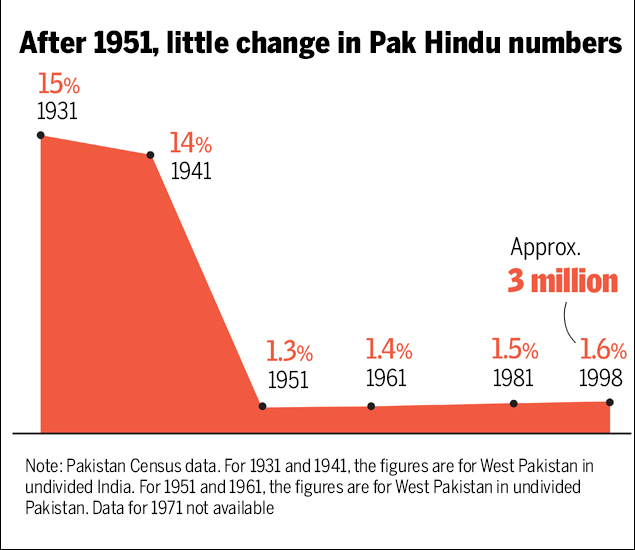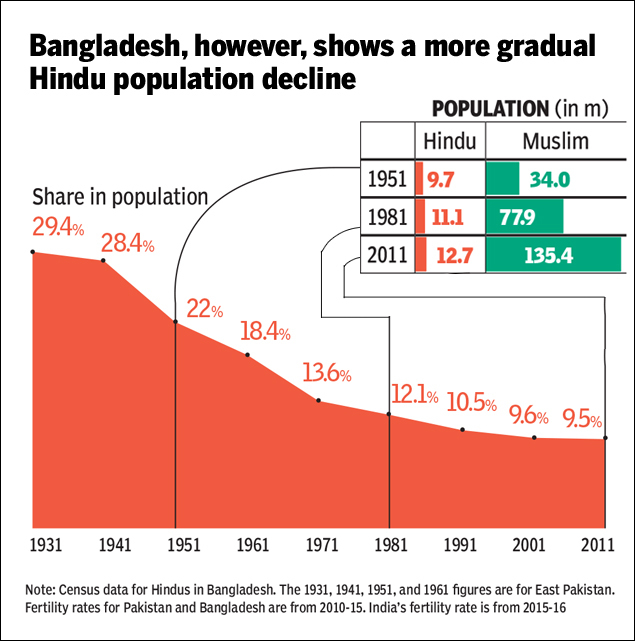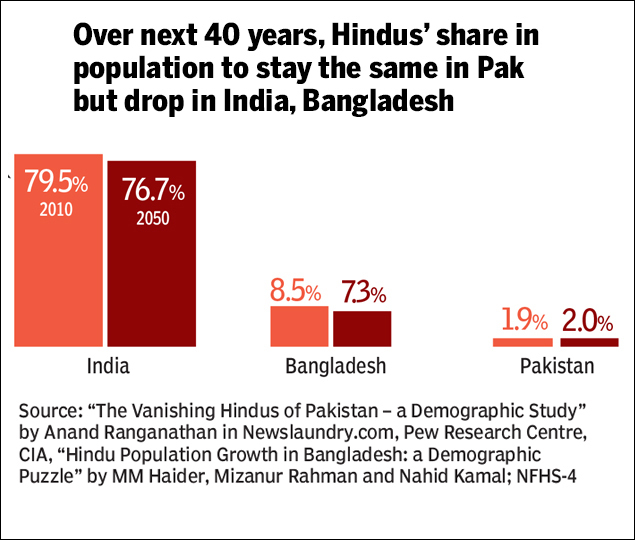Hindus in Pakistan, Bangladesh; Muslims in India
This is a collection of articles archived for the excellence of their content. |
Demographic changes after 1947

Graphics: Sajeev Kumarapuram
From: Dec 16, 2019 Times of India

Graphics: Sajeev Kumarapuram
From: Dec 16, 2019 Times of India

Graphics: Sajeev Kumarapuram
From: Dec 16, 2019 Times of India

Graphics: Sajeev Kumarapuram
From: Dec 16, 2019 Times of India
The debate around the Citizenship (Amendment) Act has thrown up several numbers that are themselves no less debatable for how they’re read. Hardliners have talked about a drastic decline in the Hindu population of Pakistan to highlight the marginalisation of the community in the 70-odd years since the country came into being. But census figures suggest that the decline, more than being systematic and spread out over several decades, may be more a case of a sudden sharp drop and subsequently a very low but consistent representation in the population.
While this is certainly true for Pakistan, Hindu numbers in Bangladesh, too, were affected in a big way by partition and the 1971 War. That Hindus have faced marginalistion in Pakistan and Bangladesh is undeniable, but it is not the same story in the two countries.
POST PARTITION, HINDU POPULATION IN PAKISTAN HAS REMAINED SAME
Rather than a systematic decline, the Hindu population in Pakistan fell dramatically during and right after Partition. In fact, after 1951, the Hindu population’s share has seen marginal increases in every census.
In the 1998 census, the Hindu population in Pakistan stood at 2.1 million. The latest 2017 census shows that Pakistan’s total population grew to 207 million. Assuming the proportion of Hindus has remained the same, the Hindu population today is about 3 million
PARTITION CHANGED DEMOGRAPHICS
Demographics of Punjab reflect the same drastic drop for Muslim population between 1941 and 1951. A comparison to the share of Muslims in UP’s population, which largely stayed constant, shows why the drop in Punjab’s Muslim population and Pakistan’s Hindu population can both be attributed to Partition
Before August 14, 1947, already 2.1 million Muslims had moved to West Punjab and about 2 million Hindus and Sikhs had gone the other way. By 1950, 6.5 million Muslims had crossed into Pakistan and 4.7 million Hindus and Sikhs had moved into India.
WHY FEWER HINDUS IN BANGLADESH?
Though Bangladesh’s Hindu population fell significantly in the years between Partition and the 1971 war, the slide has continued and Hindus now make up a tenth of the population, substantially higher than their proportion in Pakistan. However, absolute numbers have actually gone up for Hindus, but not at the same rate as for Muslims. One explanation could the fertility rate for Hindus in Bangladesh, which is less than replacement level.
WHAT DEMOGRAPHICS WILL LOOK LIKE IN FUTURE
The number of Muslims in India was 35.4 million in 1951 Census. It had risen to 172.2 million in the 2011 Census. By 2050, Muslims are projected to make up 18.4% of the Indian population.